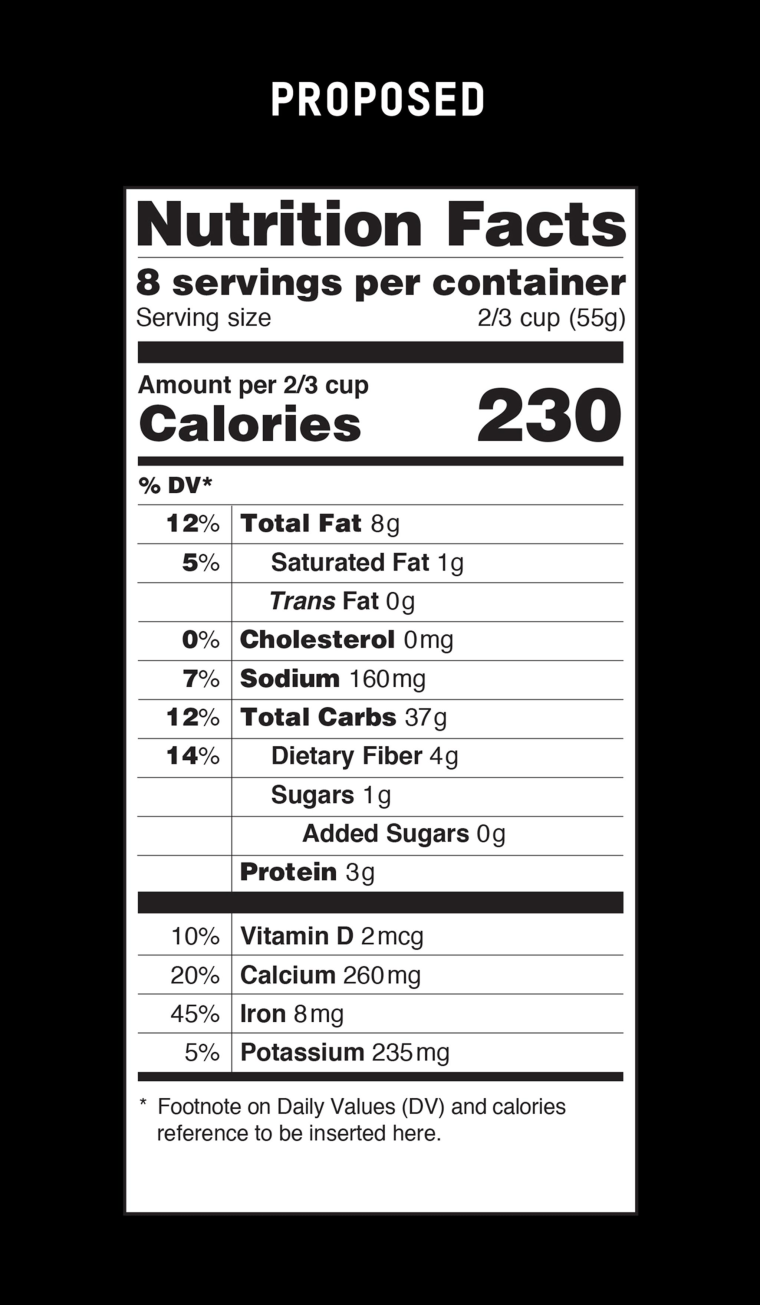The FDA is proposing the first changes to those little black-and-white food labels in more than 20 years, and they aim to take a more realistic look at what people eat.
A 20-ounce soft drink would now be a single serving under the proposed rules, and so would a whole cup of ice cream. It's sure to be controversial. Here are some of the questions people are already asking:
Doesn’t this new approach encourage people to eat and drink more?
The FDA doesn’t think so — instead they say the new serving sizes will more accurately reflect what people eat anyway, helping people make informed decisions. They cite studies showing that at least some people do look at food labels. Other research disputes this. “People aren’t doing a lot of complicated math when they are making decisions about what to eat,” says Julie Downs of Carnegie Mellon University in Pittsburgh. She’s done research showing most people really don’t change their behavior much even when they do read labels.
“People are going to drink a 20-ounce soda anyway," agrees Madelyn Fernstrom, NBC’s diet and nutrition editor.
Either way, the FDA says, the food label isn’t there to tell people what they should eat or drink. It’s there to show them what is actually in what they are eating and drinking. What the rules may do, Downs and the FDA both agree, is encourage food companies to reformulate their products so the labels will look better.
When will we see these new labels?
These are just proposed changes. The FDA will open a 90-day public comment period, and then has to consider those public comments before making any changes. Officials say they don’t have one particular timeline in mind, so it’s doubtful you’ll see any changes before next year.
And the new labels might not look just like what’s been proposed. The food industry isn’t happy with some of the ideas, such as specifying how much added sugar there is in a product, and they’ll push back.
Does this mean all the misleading claims will go?
No, Fernstrom notes. Companies can still claim on the front of the package that a food is a “good” source of whole grain, for instance, even if it doesn’t really contain much.
“If you are going to take a look, don’t be fooled by the front of the package,” Fernstrom advises. “Flip it over and look at the nutrition label."
Why trade details on fat for details on sugar?
One of the main changes swaps out requirements for listing how much fat is in a product for how much added sugar there is. Officials say this is because research now shows us that sugar is at least as important for weight gain as fat is — and there are some fats that are good for us.
Many foods naturally contain sugar, including fruit, which is good for you and which officials want everyone to eat more of. What the new labels would do is give some clarity on how much of the sugar in a food is naturally there, and what's been added to provide empty calories. "You can say, 'OK, this is part of the food'," Fernstrom says. "And you can ask how much added table sugar there is."
Can I weigh in on this?
You will be able to submit comments online. The proposed rule won’t be officially published until March 3, but at that time there will be an online link and anyone may post a comment.
